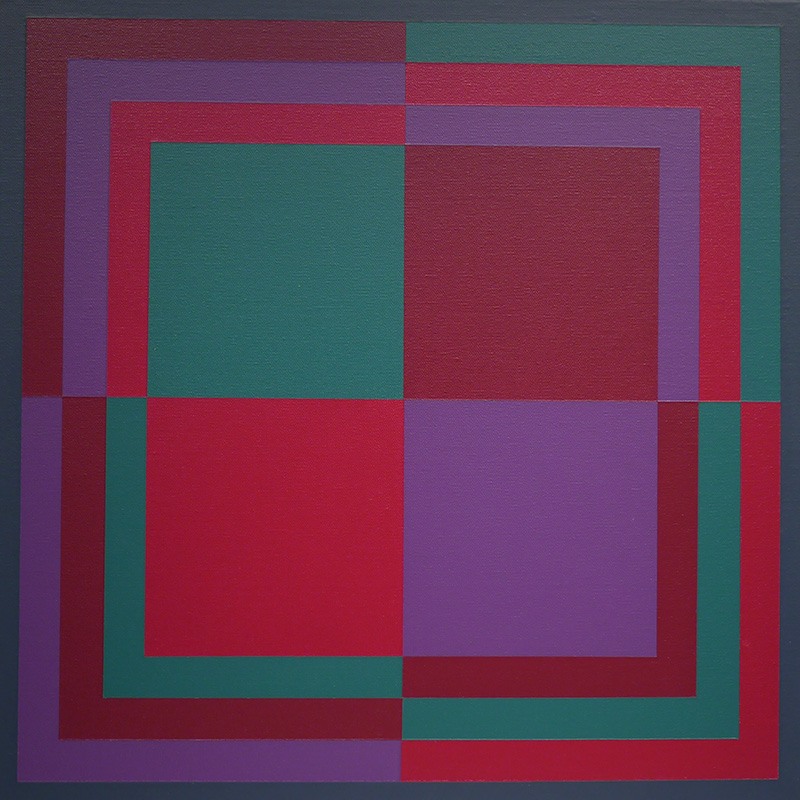Prime Clouds
The title for my new series is "Prime Clouds". "Prime" because most of the measurements within the design are prime numbers. "Clouds" because of the three floating bands of color in the center and because of me being an old Zen guy.

Quartet Riffs
This series of paintings focuses on color shifts and transpositions resulting in clashes and/or conjunctions of hues with each other. The compositions are based generally on four, predetermined colors that are rearranged in a quasi-spiral format. Each color is painted in separately in its designated area. As the painting resolves itself, chance and surprise are the new operatives.

Translucent Plus
Clear and Pure, as if shining from within. This definition was the inspiration for the Translucent Plus series. These paintings deal with the notion of apparent transparencies. I found the “Plus” sign, with its simple horizontal-vertical overlap, to be ideal to show the color adjustments I made to give the illusion of a real transparency. However, I chose colors that contradict the possibility of being real transparencies if actually mixed together.

Veils
To paraphrase a quote from Josef Albers, I use Color not for surprising or entertaining affects, but to become aware of the wonders of Color Interaction – Colors influencing and changing each other forth and back. As in the work of Albers, I want to utilize color deception in unique ways.
In my newest paintings, the “Veil Series”, I challenge myself to create an apparent illusion of transparency. However, instead of using transparent glazes, opaque color mixtures are adjusted and combined to appear as transparent. The overlapping formats are kept clear and uncluttered.

I Ching
The I Ching, also known as the Book of Changes, was originally an ancient Chinese collection of linear signs to be used as oracles. The geometric design elements of this Oriental system of changes and predictions are what interest me most. So in a way, what better design format for a series of non-objective paintings that might be a collection of "colored linear elements" to act as visual oracles, in "an abstract sense, they (the hexagrams) do not represent objective entities but functions." as quoted from Richard Wilhem's classic work on the Book of Changes.











































